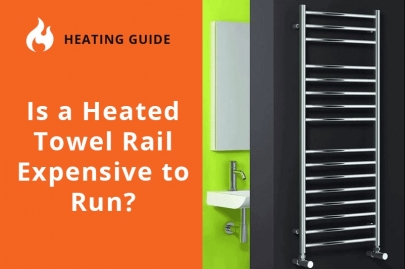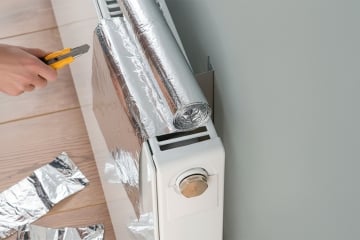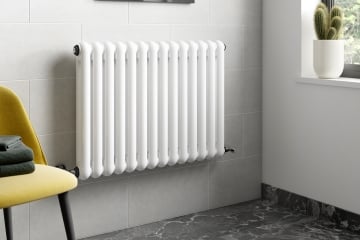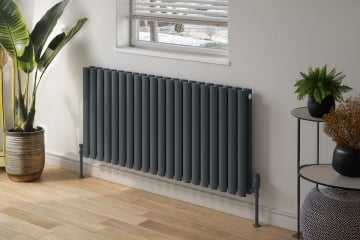Is a Heated Towel Rail Expensive to Run?

Is a Heated Towel Rail Expensive to Run?
You're probably already aware of the benefits of a heated towel rail. Combining radiator and towel rail, a heated rail will keep your bathroom warm while also heating and drying your towels. They keep towels warm, letting you step out of your shower and straight into a cozy towel, as well as getting them dry during the colder months where it might otherwise take days. Despite their obvious advantages, there has always been some apprehension about installing them because of their energy consumption.
Central Heating Towel Rails
Historically, heated towel rails would be either electric or connected to your central heating water supply. Both of these methods have disadvantages. Central heating rails are dependent on the rest of your central heating system being active, an issue in the summer months when the towel rail might be the only heating appliance that you wish to use. While this can be negated somewhat by lowering the temperature of your radiators, it still means your boiler has to perform the otherwise unnecessary task of supplying hot water to your system. The additional hours of your boiler having to supply hot water means it consumes a greater amount of natural gas or oil and will inevitably add to your heating bill.
Electric Towel Rails
Electric heated towel rails are operated like any other electric heater, being turned on and off with the flick of a switch. These rails avoid the issue of having to switch on the rest of your central heating, however they can be expensive to run due to the power requirements of the heated element within. Essentially, they function similarly to a kettle, though without quite so much short term power usage. An electric heated towel rail would cost more to run for the same length of time than a rail that is part of your central heating, however it is considerably more flexible for for switching on and off whenever you need it. The cost of running an electric towel rail can be negated somewhat in properties that can generate renewable energy, thanks to solar panels or wind turbines, making them a good choice in homes where these resources are already in place.
Dual Fuel Towel Rails
Fortunately, there many modern towel rails possess the benefits of both types while removing their disadvantages. Dual fuel rails can be powered by both electricity and fed with hot water by your central heating system. They receive hot water the same as any other radiator in your property when your central heating is active, meaning it can warm your bathroom as part of your schedule. This makes them very handy in the winter, when you can set them to come on around your bathing routine or just to take the edge off the cold in your bathroom throughout the day. They can also function the same as an electric towel rail; when switching on their electrical supply, an element inside the rail heats water stored inside. By offering both options, it's possible for your heated towel rail to serve as another part of your central heating in the winter but also to be used whenever needed throughout the summer months. The added flexibility of a dual fuel heated towel rails means it will help the majority of homeowners save on their heating bills while still enjoying warm towels (and a warm bathroom) throughout the year. When you do need to use the electric option on your rail, dual fuel rails can benefit from the same environmentally friendly electricity generation as other electric rails, such as from wind turbines and solar panels. For a little extra cost, a dual fuel rail is the most sensible option for any home with traditional central heating.
Related Posts
Radiator reflectors promise to boost your heating efficiency and reduce energy bills by reflecting heat back into the room instead of letting it escape through the wall. Sounds brilliant, but do they actually deliver?
Getting radiator placement wrong doesn't just look odd - it genuinely wastes energy, reduces comfort, and can cost you money every winter through inefficient heating. So what’s the best place for them?
Ever wondered why radiators seem to always end up under windows? Does seem odd, doesn’t it? Why put your heat source right next to the coldest part of the room?




